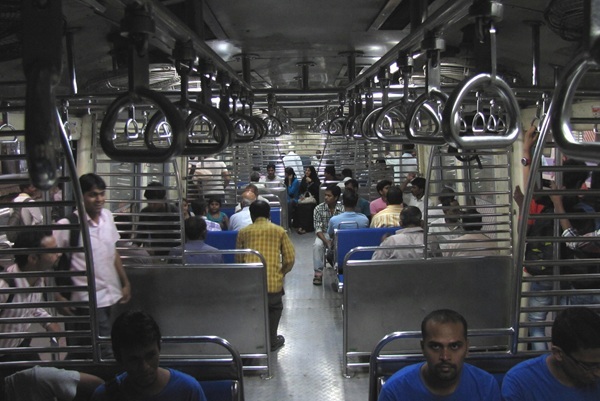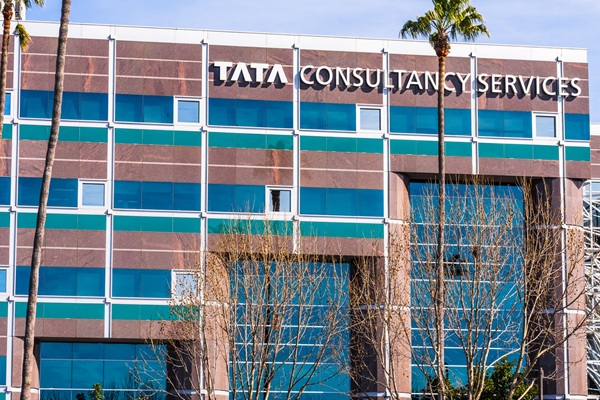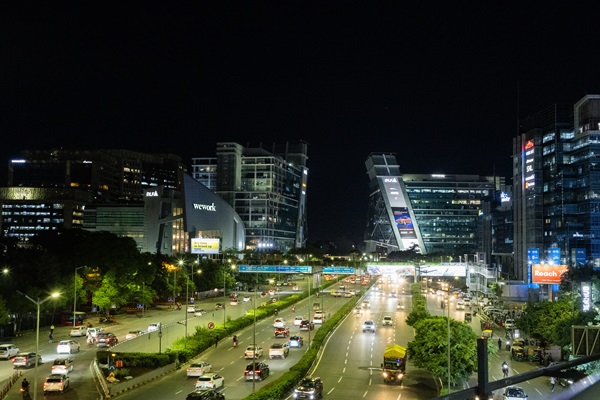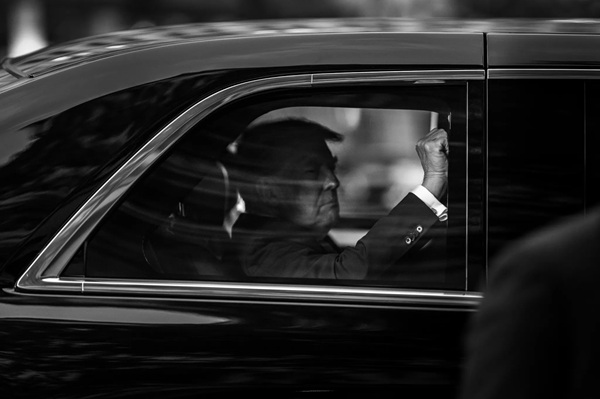.png)
Mumbai’s Hustle and the Global Game of Economic High Stakes
Pirated books, nail polish, and chapatis on rails. Mumbai’s hustle offers lessons as tariffs, visas, and taxes redraw the global economic map.

By Phynix
Phynix is a seasoned journalist who revels in playful, unconventional narration, blending quirky storytelling with measured, precise editing. Her work embodies a dual mastery of creative flair and steadfast rigor.
September 21, 2025 at 1:03 PM IST
Dear Insighter,
There’s a brand of commerce no MBA can teach you, but which Mumbai’s locals reveal daily with brutal efficiency. Step into a rush-hour morning Virar-Churchgate train and you’re in a “B-grade shopping mall on rails”: hawkers pushing skull-shaped earrings, sequinned hairbands, mascara, stoles, pirated novels, and lunch. It’s a moving ecosystem of hustle—part theatre, part survival, all economics. For the uninitiated, it’s chaos. For commuters, it’s a marketplace where resilience has no syllabus and trust operates without contracts.
I still remember my commutes to college a decade ago. A frail, visually challenged man in tattered clothes sold folders and train timetables every morning, his fingertips checking notes, his trust resting on commuters’ honesty. Reena Gaikwad, a clerk in Marine Lines, flipped her early mornings into a side-business, cooking extra chapatis and curries for women who barely had time for breakfast. Her weekend specials—sheera and puran-polis—were eagerly awaited. Chanda-ben from Bhayandar ran a one-woman fashion outlet, selling kurtas and stoles with a persuasive “Aa toh ekdum ara-ra-ra-ra che.” She’d sell at least 10 items between two stations before de-boarding at Borivali.
And then there was Deepa, about eleven or twelve (she didn’t really know), with eyes bigger than her basket of cosmetics, who sweet-talked commuters into buying nail-polish and lipstick, while telling any interested didi she wanted to be like Kareena Kapoor when she grew up. I still wonder what became of her.
But perhaps most striking were the book hawkers. They always had the bestsellers—the latest self-help fad, the motivational flavour of the season. Dan Brown’s Da Vinci Code seemed like an evergreen favourite, alongside the likes of Gone Girl, The Fault in Our Stars, Rich Dad Poor Dad, The Secret—stacked high in pirated editions. The irony was never lost: books on discipline, wealth, and wisdom, peddled by people who may not have read them. Yet they knew what sold. They always had their finger on the pulse of aspiration, hawking a future they themselves were excluded from.
These hawkers weren’t vendors. They were strategists, risk-takers, improvisers. Their hustle felt like a more honest model of resilience than what’s unfolding now.
Take Donald Trump’s decision to hike H-1B visa application fees to $100,000. Nilanjan Banik observes it’s less a policy tweak and more a mid-game rewrite. AI tools are already replacing junior coders, and India’s IT majors are trimming staff. TCS alone shed 12,200 jobs in the first quarter, while the top six firms added barely 3,847, a 72% plunge. For the 400,000 Indian IT workers whose fates depend on H-1Bs, the American dream now comes with a six-figure surcharge.
TK Arun notes companies may shift to L1 visas, or move staff to Mexico and Canada. The silver lining is offshoring. India already accounts for 55% of global GCCs, employing nearly 2 million. That footprint could expand. But it is cold comfort to those whose hopes were pinned to Silicon Valley.
Rajesh Mahapatra, in a conversation with Ajay Shankar, makes clear that while Trump and Prime Minister Narendra Modi smile for the cameras, America keeps wielding presidential orders to pressure India. The tariffs hit manufacturing; now the H-1Bs hit services. Ajay Srivastava argues that unless Trump rolls back the extra 25% tariff tied to Russia policy, a breakthrough is fantasy. India’s red lines on agriculture and dairy aren’t bargaining chips; they’re livelihoods for 700 million people.
And Europe is no softer, Srivastava reports. The EU’s Carbon Border Adjustment Mechanism has already forced a 24% collapse in India’s metal exports before a single euro of tax has been collected. MSMEs simply walked away, unable to handle the Byzantine reporting rules. Some didn’t even try.
Sangeeta Godbole notes how the India-EU deal has dragged for two decades, Brussels unwilling to temper its regulatory zeal. By 2022, nearly 80% of Indian goods already faced EU tariffs of under 1%. The marginal gains from a deal are tiny, while Europe would secure vast access to India’s growing market. Stalemate is the status quo.
Even India’s $135 billion remittance lifeline isn’t safe. Babuji K warns Trump’s “One Big Beautiful Bill Act” includes a 1% excise tax on transfers from January 2026. For decades, remittances only rose: $20 billion in the 1990s to today’s record highs, even through COVID. Now, for the first time, they face Washington’s axe. A tax on duty, on love, on sacrifice.
Closer to home, Mint Owl points out how the RBI’s communication has lost rhythm, releasing balance-of-payments data four weeks early, or slipping reports without warning. Economists are left guessing.
Banking reforms, too, are stuck in half-measures. Krishnadevan V argues PSU bank mergers have created heft without adding deal-making muscle. When Tata Steel bought Corus for $12 billion, or Bharti Airtel bought Zain Africa for $10.7 billion, which Indian PSU bank led the financing? None. As K. Srinivasa Rao emphasises, India as the world’s fourth-largest economy deserves banks that don’t just lend, but also lead global deals.
Markets are equally distorted. Sanjay Mansabdar warns that SEBI’s clampdown on arbitrageurs like Jane Street crushed implied volatility, the oxygen of Nifty options. With volatility dead, hedging tools are redundant.
And then, amid the noise, moments of theatre. Modi’s 75th birthday became diplomatic choreography, leaders from Giorgia Meloni to Trump queuing with greetings. BasisPoint Groupthink called it spectacle, but also signal: recognition of India’s inevitability.
And even as PM Modi touts the big GST reset as a ‘bachat mahotsav’ for Indians, Manuj Sabharwal highlights how these changes are stranding auto dealers with ₹25 billion in dead credits—a mess of domestic making.
Not all signals are grim. Sharmila Kantha points to the $12.5 billion outbound investment surge last year, evidence of Indian companies not fleeing but seeking opportunities abroad.
And across the Atlantic, Powell eked out a small win with a cautious 25-basis-point rate cut, resisting Trump’s pressure for more. Yet Yield Scribe warns his legacy may be fatal delay—too slow to inflation in 2021, too slow to growth in 2025, leaving Fed independence eroded.
It all circles back to those trains. I don’t ride them much anymore—once every few months, never at rush hour—but whenever I do, I find myself searching for familiar faces.
I think of that visually challenged man trusting customers' honesty with payments. In a world where $100,000 visa fees reshape industries, compliance costs shut exporters, central banks navigate political-economic pressures, perhaps we need a simpler faith in human decency.
Train hawkers taught me adaptation isn't just survival; it's maintaining dignity while changing course. Deepa wanted Bollywood stardom while selling cosmetics for family survival. Reena turned necessity into opportunity. Chanda-ben built loyalty one "ara-ra-ra-ra" at a time.
Today's disruptions—AI displacing coders, carbon taxes reshaping trade—require a similar spirit. The question isn't whether change comes, but whether we'll meet it with ingenuity—or be left clutching outdated timetables.
Until next time, gearing up for the ‘bachat mahotsav’.
Also Read:
Why Indian Banks Need Risk-Based Capital Charge Mechanism by Rahul Ghosh: Why the world’s largest banks are leaner on capital than their Indian counterparts.
One Voice, Many Questions, And a Test for Leadership by Srinath Sridharan: How a single resignation can test the very structures of corporate governance.
US Tariffs and the Future of India’s MSME Sector by Hemachandra Padhan: How diversification and tech can help MSMEs turn a tariff threat into a tripling of exports.
India’s Households Signal Fragile Revival, Rural Tilt by Dhananjay Sinha: Why the festive-season boost might not be enough without stronger income growth.
When America’s Farm Muscle Becomes its Geopolitical Weakness by G. Chandrashekhar: The bruising reckoning for US farm exports as China looks elsewhere.
India’s Gold Muscle Is Wasted Without Market Credibility by G. Chandrashekhar: Why the world’s top gold buyer still takes its price cues from abroad.
Powell Frames Fed’s Cut as Risk Insurance, Not a Pivot by Madhavi Arora: Decoding the hawkish framing of a seemingly dovish move.
BRICS – Building Brick by Brick by Babuji K: With $5.1 trillion in reserves, the bloc has muscle, but can it find coordination?
Trump, LTSE and the Fight to Slow Capitalism’s 90-Day Clock by R. Gurumurthy: The battle to break free from the tyranny of quarterly earnings.
A New Middle Eastern Canvas for All Indian Diplomacy by Lt Gen Syed Ata Hasnain: Navigating a vibrant but delicate diplomatic landscape.
Jallikattu: Tamil Nadu’s Ancient Bull-Taming Tradition by Shivaram Subramaniam: A visual story celebrating the strength and spirit of an ancient sport.
Why Menopause Remains Invisible in India’s Health and Homes by Kalyani Srinath: The health phase ignored by policy, workplaces, and families.
India’s Easing Joblessness Masks a Deeper Gender Divide in Employment by Akshi Chawla: The troubling labour market fault line beneath the headline numbers.
When Bans Breed Addiction Instead of Curing It by Kirti Tarang Pande: The unintended cost of prohibiting our way out of a problem.
Retail Inflation Could Briefly Touch Zero in October by Datametricx: A fresh test for the RBI as GST cuts and base effects could deflate the reading.
Sarci-Sense: The National Pastime of Outrage by Srinath Sridharan: How outrage over everything from food to emojis has become India’s fastest unifier.
Ambition, Morality and the Weight of Prosperity by Srinath Sridharan: A look at why punishing wealth creators seldom uplifts the poor.



